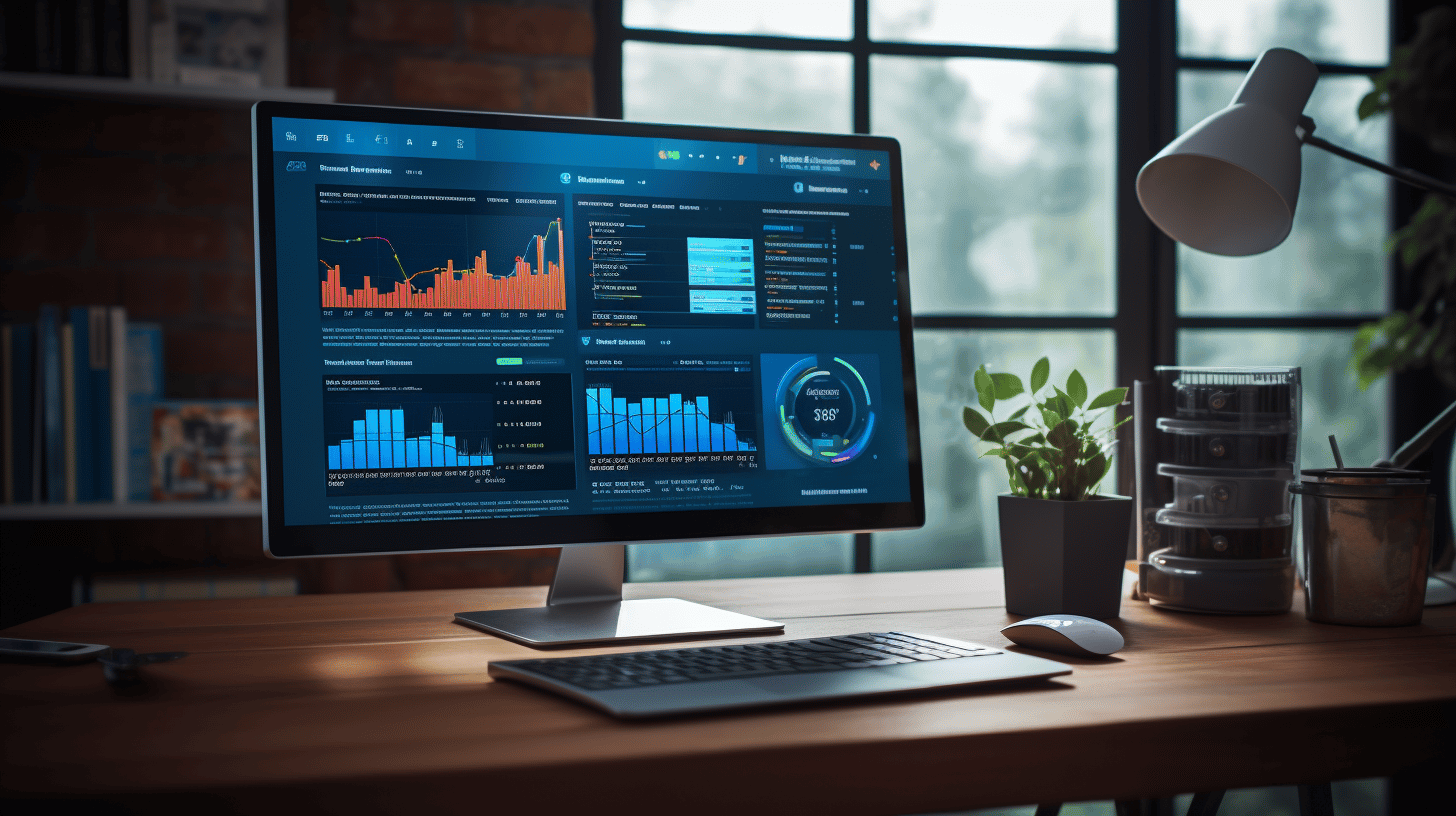WordPress is undoubtedly one of the most popular and widely used content management systems (CMS) in the world. With its user-friendly interface, vast customization options, and robust functionality, WordPress has become the go-to choice for individuals, businesses, and even large enterprises looking to establish a strong online presence.
But like any other software, WordPress requires regular updates to ensure optimal performance, security, and compatibility with the latest technologies. In this article, we will explore the importance of keeping your WordPress website up to date and the steps you can take to ensure smooth updates that won’t disrupt your site’s functionality.
So, if you’re a WordPress website owner or manager, buckle up and get ready to learn how you can keep your website running smoothly by staying on top of WordPress updates. From understanding WordPress’s market presence to the implications of not updating and the best practices for ensuring a smooth update process, we’ve got you covered.
Let’s dive in! 🚀
Understanding WordPress’s Market Presence
In the ever-evolving landscape of website creation and management, WordPress has emerged as a dominant player. Its widespread popularity and extensive market presence make it a powerhouse in the content management system (CMS) industry. Let’s explore some key statistics and insights that shed light on WordPress’s market position.
WordPress Usage Statistics
As of 2024, WordPress powers an impressive 43% of websites on the internet[1]. This staggering figure attests to the wide adoption and trust placed in WordPress by individuals, businesses, and organizations worldwide. With its user-friendly interface and extensive library of themes and plugins, WordPress has become the go-to platform for website creation and management.
Market Share
WordPress’s market share in the CMS arena is nothing short of remarkable. In fact, it commands a commanding 62.5% of the CMS market[1]. This dominance is a testament to the platform’s versatility, scalability, and robustness. Whether you’re a blogger, an e-commerce entrepreneur, or a large enterprise, WordPress offers a solution that can cater to your specific needs.
Rate of New Sites
To further highlight WordPress’s influence, more than 500 new sites are being built on the platform daily[1]. This astounding number demonstrates the continuous growth and expansion of the WordPress ecosystem. With such a rapid pace of adoption, it’s clear that users recognize and appreciate the value that WordPress brings to their online presence.
E-Learning Plugins Boom
The reach of WordPress extends beyond traditional websites. In particular, its e-learning plugins have experienced a remarkable surge in popularity. In 2024 alone, these plugins witnessed a staggering 50% increase in downloads[1]. This surge speaks to the increasing demand for online education platforms and the suitability of WordPress as a platform for hosting such portals.
In conclusion, WordPress’s market presence is undeniable. Its widespread usage, commanding market share, continuous growth, and popularity in niches like e-learning all contribute to its reputation as a leading CMS solution. If you’re looking to create a professional website that stands out from the crowd, consider leveraging the power of WordPress[2].
Outdated WordPress Sites and their Vulnerabilities
🔒 Attention website owners! Is your WordPress site up to date? 🔒
In today’s digital landscape, maintaining a secure website is crucial. WordPress, one of the most popular content management systems (CMS), is no exception. Unfortunately, many website owners neglect to update their WordPress sites, leaving them vulnerable to potential cyber threats. In this section, we’ll explore the reasons behind outdated WordPress websites and the implications of not keeping them up to date.
Reasons for Outdated WordPress Websites
Updating a WordPress site may seem like a tedious task, but neglecting it can have dire consequences. Here are a few reasons why website owners often find themselves with outdated versions of WordPress:
- Lack of Awareness: Website owners may not realize the importance of updating their WordPress sites. They might be unaware of the potential security risks associated with running outdated software.
- Fear of Breaking the Site: Some website owners fear that updating WordPress could cause compatibility issues with their current theme or plugins. Consequently, they avoid updates to prevent any disruptions to their site’s functionality.
- Limited Technical Knowledge: Managing and updating a WordPress site requires a certain level of technical expertise. Some website owners may lack the necessary skills or resources to perform regular updates.
Implications of Not Updating
Neglecting to update your WordPress site can leave it susceptible to various security vulnerabilities. Here are a couple of eye-opening statistics that highlight the impact of outdated WordPress websites:
- 📊 44% of successful hacks were due to outdated WordPress sites.
- 📊 Two-thirds of websites still rely on older WordPress versions and often fail to install updates.
Let’s take a closer look at the implications of not updating your WordPress site:
- Security Vulnerabilities: Outdated versions of WordPress are more prone to security breaches. Hackers actively search for vulnerabilities in older versions to exploit, potentially gaining unauthorized access to sensitive information or injecting malicious code.
- Lack of Compatibility: Running an outdated WordPress version can lead to compatibility issues with newer themes and plugins. As a result, your site’s design, functionality, and user experience may suffer.
- Performance and Speed Issues: Updates often include performance improvements and bug fixes. By not updating your WordPress site, you risk encountering performance issues that can slow down your site’s loading speed and overall performance.
To ensure the security and stability of your WordPress site, it is crucial to regularly update both the core WordPress software and any themes or plugins you have installed. By doing so, you can stay one step ahead of potential vulnerabilities and provide your users with a seamless browsing experience.
🔐 Discover more about website security concerns in WordPress maintenance. 🔐
Importance of Regular WordPress Updates
👋 Introduction:
Regular updates are a crucial aspect of maintaining a healthy and secure WordPress website. By staying on top of the latest updates, you can protect your site from security vulnerabilities, improve performance, and ensure compatibility with new features and functionalities. In this section, we’ll delve into the frequency of WordPress updates and how they help protect your site from potential attacks.
Frequency of WordPress Updates:
WordPress is a dynamic platform that continuously evolves to meet the ever-changing demands of the digital landscape. The core software undergoes frequent updates, typically occurring two to three times a year. These updates aim to address security vulnerabilities, fix bugs, and introduce new features. By keeping your WordPress installation up to date, you can benefit from:
- Enhanced Security: WordPress updates often include security patches that prevent potential breaches or vulnerabilities. As cyber threats continue to evolve, it becomes imperative to stay current with the latest updates to safeguard your website.
- Improved Performance: Updates can also optimize your website’s performance by refining code, streamlining processes, and enhancing overall speed. A faster website not only improves user experience but also contributes to better search engine rankings.
- Compatibility with Themes and Plugins: WordPress updates ensure compatibility with the latest versions of themes and plugins. As developers release updates for their products, it’s crucial to keep your WordPress installation up to date to avoid compatibility issues and potential conflicts.
- Access to New Features: With each update, WordPress introduces new features and functionalities that can enhance the user experience and expand the capabilities of your site. By staying updated, you won’t miss out on exciting new features that could benefit your website.
Protecting Sites from Attacks:
Cybersecurity threats are a constant concern in today’s digital landscape. WordPress, being the most popular content management system (CMS), becomes an attractive target for hackers. Regular WordPress updates play a vital role in protecting your site against potential attacks. Here’s why:
- Patching Vulnerabilities: Updates often include security patches specifically designed to address vulnerabilities uncovered by the WordPress community or security researchers. These vulnerabilities can range from minor bugs to critical loopholes that cybercriminals may exploit. By promptly applying updates, you can patch these vulnerabilities and strengthen your site’s security.
- Security and Plugin Compatibility: Apart from the core updates, plugins and themes also require frequent updates to mitigate security risks. Outdated plugins can create security loopholes and allow unauthorized access to your site. When you update WordPress regularly, it ensures that the plugins and themes you use are also up to date, reducing the risk of potential attacks.
- Website Reputation: A hacked website not only poses a significant security risk but also tarnishes your brand reputation. Visitors may lose trust in your site, impacting your credibility and potentially leading to loss of business. By regularly updating WordPress and implementing the latest security measures, you demonstrate your commitment to a safe and secure online environment.
According to recent data, approximately 30.8% of websites use none of the CMS that we monitor, which implies potential vulnerabilities. Keeping your WordPress installation up to date is a proactive measure to safeguard your website against cyber threats and maintain its integrity. Remember, prevention is always better than dealing with the aftermath of a security breach.
🔒 Stay secure, stay updated!
Ensuring Smooth WordPress Updates
Introducing new features, fixing bugs, and enhancing security are just a few reasons why WordPress regularly releases updates. However, without proper preparation and precautions, these updates can sometimes lead to unexpected issues. To ensure a smooth update process for your WordPress website, here are some essential steps to follow:
Backup Before Updating 📂
Before making any updates, it’s crucial to create a backup of your entire WordPress website. A backup serves as a safety net in case something goes wrong during the update process. Here’s how you can create a backup:
- Manual Backup: Manually download all your website files and export your database using tools like phpMyAdmin or cPanel. This backup method requires technical knowledge and can be time-consuming.
- Automated Backup: Use a reliable WordPress backup plugin, such as UpdraftPlus or BackupBuddy, to simplify the backup process. These plugins allow you to schedule regular backups and store them securely on cloud storage services like Dropbox or Google Drive.
Choosing the Right WordPress Hosting Provider 🌐
Your WordPress hosting provider plays a crucial role in the stability and performance of your website, especially during updates. Look for a hosting provider that offers:
- Automatic Updates: Ensure that your hosting provider automatically updates the WordPress core, plugins, and themes to the latest stable versions. This feature reduces the risk of compatibility issues and keeps your website secure.
- Staging Environment: A staging environment allows you to create a replica of your live website to test updates before implementing them. It’s an excellent way to identify and resolve any potential issues without affecting the live site.
- 24/7 Technical Support: Opt for a hosting provider that offers reliable and responsive customer support. In case of any update-related issues, you can seek immediate assistance to minimize downtime.
Installing the Right Security Plugins 🔒
Security should be a top priority when updating your WordPress website. Installing and configuring the right security plugins can help protect your site from malware, brute-force attacks, and other security vulnerabilities. Consider using the following plugins:
- Wordfence: A comprehensive security plugin that offers features like malware scanning, firewall protection, and login security to fortify your website’s defenses.
- Sucuri: Sucuri is a cloud-based security platform that provides robust protection against DDoS attacks, malware infections, and website blacklisting.
- iThemes Security: Formerly known as Better WP Security, this plugin offers a range of security features, including two-factor authentication, file integrity checks, and brute-force protection.
Testing the Website After Updating 🧪
After applying updates to your WordPress website, it’s crucial to thoroughly test its functionality and appearance to ensure everything is running smoothly. Here are a few steps to follow during the testing phase:
- Check Website Load Time: Use tools like GTmetrix or Pingdom to measure your website’s load time. If it has increased significantly after the update, there might be performance issues that need to be addressed.
- Test Basic Functionality: Test essential features like navigation menus, contact forms, and search functionality to ensure they are working correctly.
- Check Cross-Browser Compatibility: Verify that your website displays correctly and functions properly across different web browsers such as Chrome, Firefox, Safari, and Internet Explorer.
- Review Mobile Responsiveness: With the increasing prevalence of mobile browsing, ensure that your website looks and works well on various mobile devices and screen sizes.
By following these steps, you can mitigate the risks associated with WordPress updates and ensure a smooth and hassle-free process. Remember, always back up your website, choose a reliable hosting provider, prioritize security, and thoroughly test your website after updating. Happy updating!
Conclusion
In conclusion, keeping your WordPress website up to date is crucial for its security, performance, and overall success. By regularly updating your WordPress core, themes, and plugins, you can ensure that your site remains protected against vulnerabilities and attacks.
To make the process of updating smoother, be sure to follow these essential steps:
- Backup Before Updating: Always create a backup of your website before performing any updates. This way, if something goes wrong during the update process, you can easily revert back to a previous version of your site.
- Choosing the Right WordPress Hosting Provider: Opt for a reliable and secure managed WordPress hosting provider like Managed-WP.™ They offer a premium platform that simplifies infrastructure and provides expert 24/7/365 WordPress support, backup management, patch management, and proactive monitoring. Learn more about their services.
- Installing the Right Security Plugins: Enhance the security of your WordPress site by installing security plugins that can protect against common threats and vulnerabilities. These plugins can help detect and block malicious activities, strengthen your site’s defenses, and keep your data safe.
- Testing the Website After Updating: After completing the updates, it’s essential to thoroughly test your website to ensure that everything is functioning correctly. Check for any broken links, formatting issues, or functionality problems that may have been caused by the updates.
By following these best practices and investing in the right tools and services, you can keep your WordPress website running smoothly, secure it from potential threats, and provide an excellent user experience for your visitors. Stay proactive in maintaining your website, and you’ll reap the benefits of a secure and optimized online presence.
Frequently Asked Questions
- Why is it important to keep WordPress and its plugins updated?
Keeping WordPress and its plugins updated is important to ensure website security, fix bugs and software vulnerabilities, improve performance, and access new features and functionalities.
- How often should I update WordPress and its plugins?
It is recommended to update WordPress and its plugins as soon as new updates are available. Regular updates help in maintaining website security and stability.
- What precautions should I take before updating WordPress and its plugins?
Before updating WordPress and its plugins, it is advisable to take a backup of your website, disable caching plugins temporarily, and check the compatibility of new updates with your current theme and plugins.
- What if my website breaks after updating WordPress or plugins?
If your website breaks after updating WordPress or plugins, it is likely due to conflicts between themes or plugins. You can try disabling recently updated plugins or switch to a default theme to identify the issue. If needed, you can restore your website from the backup you took before updating.
- How can I keep my website safe during the update process?
To keep your website safe during the update process, it is recommended to use a staging environment to test updates before applying them to the live site. Additionally, installing a security plugin, enabling automatic updates, and having a regular backup strategy in place can help safeguard your website.



















